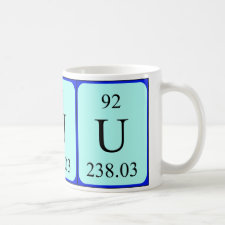
Authors: Zhang XF, Ding CL, Liu H, Liu LH, Zhao CQ
Article Title: Protective effects of ion-imprinted chitooligosaccharides as uranium-specific chelating agents against the cytotoxicity of depleted uranium in human kidney cells.
Publication date: 2011
Journal: Toxicology
Volume: 286
Issue: (1-3)
Page numbers: 75-84.
DOI: 10.1016/j.tox.2011.05.011
Alternative URL: http://www.sciencedirect.com/science/article/pii/S0300483X11002058
Abstract: Occupational internal contamination with depleted uranium (DU) compounds can induce radiological and chemical toxicity, and an effective and specific uranium-chelating agent for clinical use is urgently needed. The purpose of this study was to investigate whether a series of synthesized water-soluble metal-ion-imprinted chitooligosaccharides can be used as uranium-specific chelating agents, because the chitooligosaccharides have excellent heavy metal ion chelation property and the ion-imprinting technology can improve the selective recognition of template ions. DU-poisoned human renal proximal tubule epithelium cells (human kidney 2 cells, HK-2) were used to assess the detoxification of these chitooligosaccharides. The DU-chelating capacity and selectivity of the chitooligosaccharides were determined by inductively coupled plasma-mass spectrometry (ICP-MS). Cell viability, cellular accumulation of DU, membrane damage, DNA damage, and morphological changes in the cellular ultrastructure were examined to assess the detoxification of these chitooligosaccharides. The results showed that the Cu2+-imprinted chitooligosaccharides, especially the Cu2+-imprinted glutaraldehyde-crosslinked carboxymethyl chitooligosaccharide (Cu-Glu-CMC), chelated DU effectively and specifically, and significantly reduced the loss of cell viability induced by DU and reduced cellular accumulation of DU in a dose-dependent manner, owing to their chelation of DU outside cells and their prevention of DU internalization. The ultrastructure observation clearly showed that Cu-Glu-CMC-chelated-DU precipitates, mostly outside cells, were grouped in significantly larger clusters, and they barely entered the cells by endocytosis or in any other way. Treatment with Cu-Glu-CMC also increased the activity of antioxidant enzymes, and reduced membrane damage and DNA damage induced by DU oxidant injury. Cu-Glu-CMC was more effective than the positive control drug, diethylenetriaminepentaacetic acid (DTPA), in protection of HK-2 cells against DU cytotoxicity, as a result of its chelation of UO22+ to prevent the DU internalization and its antioxidant activity
Template and target information: copper ion, Cu(II), uranyl ion, U022+depleted uranium, uranium
Author keywords: Depleted uranium, Human kidney cell, Cytotoxicity, Chelating agent, Imprinted chitooligosaccharide



Join the Society for Molecular Imprinting

New items RSS feed
Sign-up for e-mail updates:
Choose between receiving an occasional newsletter or more frequent e-mail alerts.
Click here to go to the sign-up page.
Is your name elemental or peptidic? Enter your name and find out by clicking either of the buttons below!
Other products you may like:
 MIPdatabase
MIPdatabase









